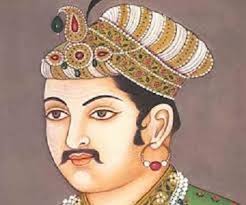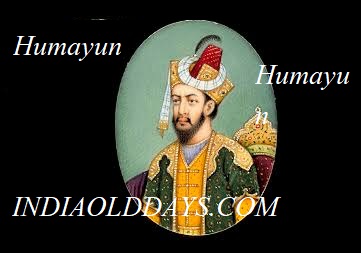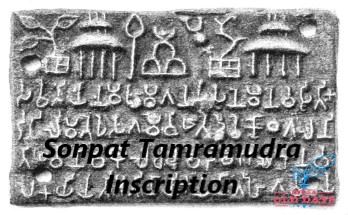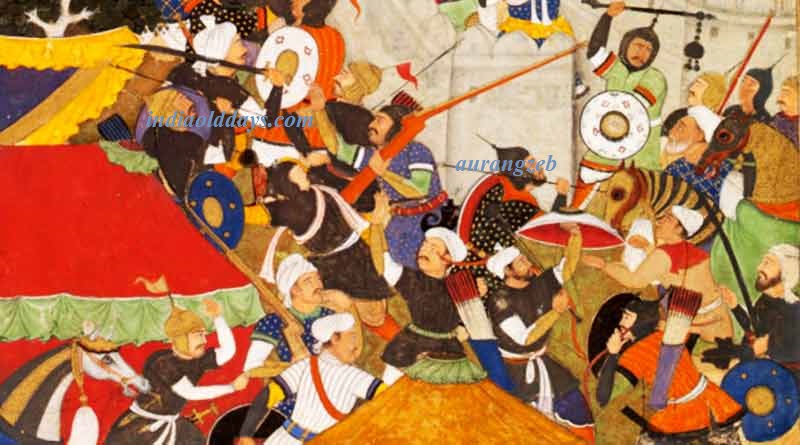Founder of Mughal dynasty: Babur (1526-1530A.D.)

Babur was born on 14 February 1483 in Fargana, a small principality state of Maavarunnahar (Trance Aksiyaana). Babur’s father’s name was Omar Sheikh Mirza , who was the owner of the Property of Fargana. And his mother’s name was Kutlugnigar Khan. The fifth descendant of Timur on behalf of Babur Paternal side and the fourteenth descendant of Changej Khan from the mother side. Thus, there was a combination of blood of both Turks and Mughlo.
The new dynasty that Babur laid the foundation of, was the Chagatai descent of the Turkish breed. Named after the second son of Changej Khan. Babur, after the death of his father, in 11 years of short life in 1494 AD. Sitting on the throne of Fargana. Babur’s invasion of India was a reflection of the defeat of powerful Ujabe in Central Asia, and the fear of the Osmani descent. Babur’s erudite Sardar Shaibani Khan defeated Bar-2, forcing him to try his fortune in Southeast India, abandoning the idea of attaining his ancestral throne. In this same issue, In the same period, Babur in 1504 AD. I conquered Kabul and as a result he assumed the title of Paadashaah in 1507. Before Paadashaah , Babur used to do the ancestral title of Mirza.
Following are the invasions of Babur’s India:
At the time when Babur invaded India, there were many independent states in India like Bengal, Malwa, Gujarat, Sindh, Kashmir, Mewat, Delhi, Khandesh, Vijayanagar and Vichun Bahmani principals.
Babur in his autobiography ‘Babarnama’ had only five Muslim rulers –
- Bengal,
- Delhi,
- Malwa,
- Gujarat and
- Bahamani states
And mentioned two Hindu rulers – Mewar and Vijaynagar.
In his autobiography, Babarnama, Babur said that Krishnadevaraya , the then ruler of Vijayanagar, was considered the most powerful king of contemporary India. Babur was invited to come to India, the Punjab’s Subedar Daulat Khan Lodi and Ibrahim’s uncle Alam Khan lodi . Babur has invitation to Babur to attack India only by Rana Sanga, Babur has himself mentioned in his autobiography. Apart from this, this evidence has not been verified from any other source. Babur had invaded India four times before Panipat Victory. In the same attack, he also won the fort of Bhera. Babur has said in his autobiography that the first reason for winning this fort (Bhera) in the battle (21 April 1526) was the main reason for Babur’s victory – his artillery and favorable generalshipIn the first war of Panipat, Babur used the war policy of the Ugbegs, the Tulgama war method and the Usmani method (Rumi method) in decorating the cannons. Leaving the place arranged between two carts and running the cannons in it was called Usmani method. This method was called Usmani method because it was used by the Osmanis in the war against the Safavi ruler Shah Ismail. Babur had taken the Tulugama warfare method from the Ujabekon.
In the battle of Panipat, Babar’s artillery was led by two qualified Turkish officers named Ustad Ali and Mustafa Khan. The main reason for the defeat of Ibrahim Lodi in the battle of Panipat – lack of unity, unskilled military life and unfinished warlords, was disrespectful to him.
War of Panipat – This war decided not the fate of India but the fate of the Lodis. In celebration of victory in the Panipat war, Babur donated a one-one silver coin to every resident of Kabul. Babur was also known as Kalandar because of his generosity.
The main reason for the battle of Khanwa fought by Babur against Rajputs was the determination of Babur to stay in India.
Between Rana Sanga and Babur, Shakti demonstration 40 km away from Agra On 17 March 1527, at a place was called Khanwaan. In this war, on behalf of Rana Sanga, Hassan Khan Mewati, Mahmood Lodi, Alma Kha Lodi and Medini Rai took part. Babur gave slogan of jihad (religion-war for the protection of Islam) to quench the morale of his soldiers. Announcing the end of a tax called Tamga called on Muslims. Babur had assumed the title of both Ghazi (both warrior and religious preacher) after his victory in the battle of Khanwa.
Ashirwadi Lal Srivastava has given a ratio of 1: 2 in the armies of Babur and Rana. Babur attacked on MediniRai to seize Chanderi in 29 january 1528 AD. Medinarai was defeated, it proved to be helpful for winning the victory of Malwa for Victory Babur. Babur also gave a slogan to Jihad on the occasion of this war. After the war, the tower of the Rajputs was built. In the battle of Chanderi, Rajput women made jauhar fast. In the battle of Ghaghra on 6 May 1529, Babur defeated the combined Afghan army of Bihar and Bengal.
After this war, Babur became permanently entitled to India. Now the limits of his empire spread from Indus to Bihar and from Himalayas to Gwalior. Babur died in Agra on 26 December 1530 and was buried in Noor-Afghan (modern Arambagh) Bagh in Agra, but later he was buried at the place chosen by him in Kabul.
Babur said after the victory of Panipat that Kabul’s poverty is no longer for us again. Which is mentioned in Baburnama.
Kabul and Kandahar were included in northern India for the first time after the Kushan empire after Babur’s arrival in India. In his autobiography, Tuzuk-e-Babri (Turkey), Babur has given a detailed description of India’s then-current political condition, the living standards of the animals and the flowers and fruits of the Indians. Some historians consider the cause of Babur’s death as the poison given by Ibrahim Lodi’s mother. Babur first broke the tradition of Sultan and declared himself a king, whereas earlier rulers used to call him as Sultan.
Functions of public works conducted by Babur
Babur was very fond of planting gardens. He planted a garden with geometric method in Agra, which was called Noore-Afghan. But now it is called a rest garden. Babur used a measurement called Ghaz-e-Babari to measure the roads, which continued for a long time.
Babur’s autobiography-
Babur’s autobiography was translated by Abdurrahim Khankhana, along with Ersikon in Persian and Mrs. Babridge in English. Elphinstone has written about his autobiography – “It is the only book in history to be found in Asia.” Babur compiled a poetry collection Diwan (Turkish language).
Babur developed a verse style named Mubaiyaan. He composed Rizal-e-Usaz, also called Khat-e-Babri. About Babar, Lanepoole wrote that “Babur was a mere soldier of farture and not the founder of an empire”.
Reference : https://www.indiaolddays.com/





